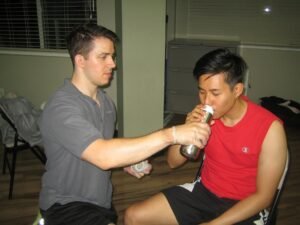A heatstroke is considered as a life-threatening condition that can lead to an elevated body temperature accompanied with the dysfunction of different organ systems. The distinguishing symptom of this condition is the elevated body temperature that is higher than 104 F and can include possible brain damage.
Heatstroke is a medical emergency that is often fatal if quick and proper treatment is not delivered right away. The condition occurs since the body could no longer cool itself thus the body temperature continues to increase at a fast rate to levels that are considered dangerous. It can even temporarily or permanently damage the vital organs such as the heart, liver, lungs, kidneys and the brain.
Who are at risk for heatstroke?
There are some individuals who are at high risk for developing heatstroke. It includes the following:
- Infants and young children
- Individuals who work or exercise strenuously under a hot environment
- Elderly
- Athletes
Symptoms of heatstroke
Always bear in mind that the symptoms of a heatstroke is often strikingly similar to a heart attack or other conditions. Oftentimes an individual can experience the symptoms of heat exhaustion before progressing to heatstroke. Nevertheless, in some cases, the symptoms of the condition quickly develop without any warning.
Common symptoms and signs of heatstroke
If these symptoms are present, a heatstroke is developing. With this in mind, it is important to take immediate action right away.
- Elevated body temperature over 104 F or higher
- Rapid heart rate
- Difficulty breathing
- Individual stopped sweating with flushed dry skin
- Confusion
- Hallucinations
- Disorientation
- Agitation
- Seizure
- Coma
Treating a heatstroke victim

Individuals suffering from a heatstroke must be given immediate first aid care in order to avoid permanent damage.
- The initial move is to cool the individual by moving to a cool and shady area. The clothing must be removed and apply cool water on the skin. You should also fan the individual to promote sweating and evaporation and apply ice packs in the armpits and groin.
- In case the individual can drink, provide cool water or beverages that do not contain caffeine or alcohol.
- Monitor the body temperature using a thermometer and continue cooling the individual until the temperature drops to 101-102 F.
- Call for emergency assistance right away.
How to prevent heatstroke
There are certain considerations to bear in mind in order to prevent heatstroke.
- Always stay properly hydrated by avoiding strenuous activities or exercise during warm and humid weather.
- For those who are required to perform certain physical activities during warm weather, always drink a lot of fluids but try to avoid caffeine, alcohol and tea since such drinks can lead to dehydration.
- Take regular breaks to rehydrate the body when performing activities under the sun.
- Provide the body with adequate replenishment of electrolytes and other fluids if the individual sweats excessively or engaged in strenuous activity under direct sunlight for extended periods.
- Vehicles must be locked when not in use and do not leave children, infants and even pets unattended inside a locked vehicle.
